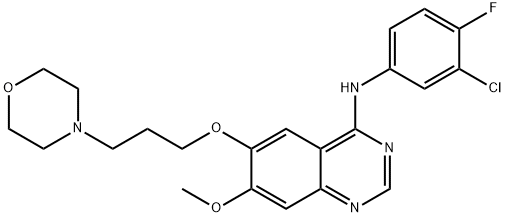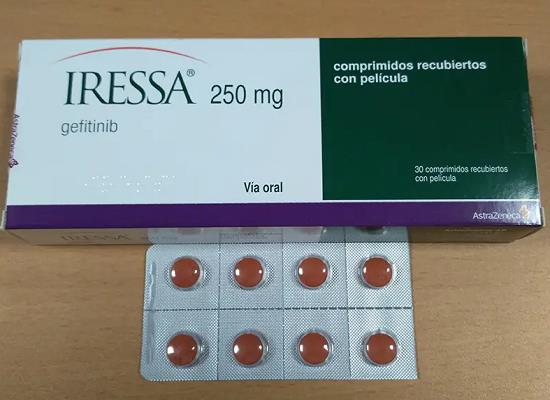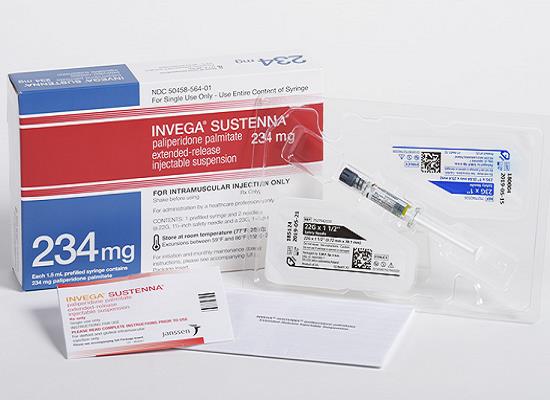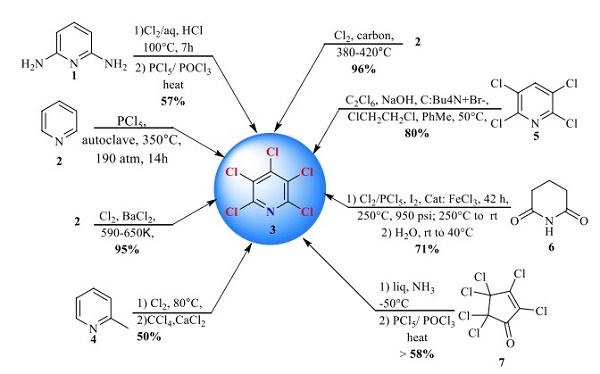Gefitinib: mechanism of action, pharmacokinetics and side effect
General Description
Gefitinib is a medication used in the treatment of certain cancers, particularly non-small cell lung cancer (NSCLC). It acts by specifically targeting the epidermal growth factor receptor (EGFR) and inhibiting its tyrosine kinase activity. By blocking the Ras signal transduction pathway and inducing apoptosis in cancer cells, gefitinib helps restore balance in cell proliferation. It is particularly effective in NSCLC cases with specific EGFR mutations. After oral administration, gefitinib is slowly absorbed, with a bioavailability of 60%. It is primarily metabolized by the liver and excreted through feces. Common side effects include skin rash, diarrhea, and nausea, which are generally reversible. Gefitinib has a favorable toxicity profile compared to similar drugs.
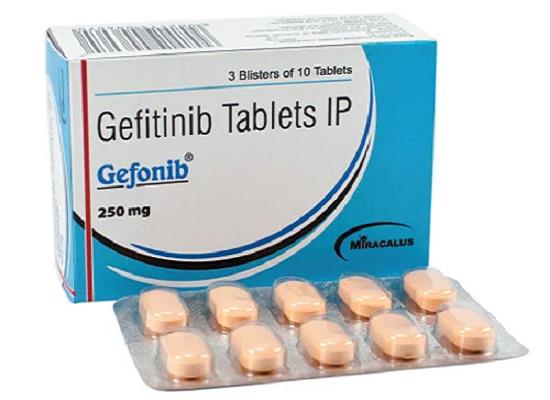
Figure 1. Tablets of gefitinib
Mechanism of action
Gefitinib is a medication that acts on the epidermal growth factor receptor (EGFR) in the treatment of certain cancers, particularly non-small cell lung cancer (NSCLC). It is a synthetic compound that selectively binds to the ATP-binding site of the EGFR tyrosine kinase domain. By inhibiting the autophosphorylation of EGFR, gefitinib blocks the Ras signal transduction pathway. The EGFR, also known as HER1 or ErbB-1, plays a crucial role in regulating cell proliferation and survival. In cancer cells, the EGFR is often overactive, leading to uncontrolled cell growth. Gefitinib specifically targets this abnormality by inhibiting the activation of EGFR tyrosine kinase, which is responsible for triggering the anti-apoptotic Ras signal transduction cascade. By interrupting this pathway, gefitinib helps restore the balance in cell proliferation and promotes apoptosis in cancer cells. Research has shown that gefitinib is particularly effective in NSCLC cases where there is a specific mutation in the EGFR tyrosine kinase domain. This mutation activates anti-apoptotic pathways, contributing to cancer cell survival and resistance to treatment. By targeting this specific pathway, gefitinib shows promise in improving outcomes for patients with EGFR-mutated NSCLC. Overall, gefitinib's mechanism of action involves inhibiting EGFR tyrosine kinase activity, blocking the Ras signal transduction pathway, and inducing apoptosis in cancer cells. It represents a targeted therapy option for certain cancers, providing new avenues for personalized treatment approaches. 1
Pharmacokinetics
After oral administration, gefitinib is slowly absorbed with an average bioavailability of 60%. Peak plasma levels are reached 3-7 hours after administration, and the drug has a mean elimination half-life of 48 hours. Food intake does not significantly affect the bioavailability of gefitinib. In the bloodstream, approximately 90% of the drug is bound to serum albumin and alpha 1-acid glycoproteins, regardless of its concentration. Gefitinib is primarily metabolized by the liver through cytochrome P450 isoenzyme 3A4 (CYP3A4), with minor contributions from CYP3A5 and CYP2D6. There are three main sites of biotransformation: metabolism of the N-propoxymorpholino group, demethylation of the methoxy substituent on the quinazoline, and oxidative defluorination of the halogenated phenyl group. Gefitinib is predominantly excreted through the feces (86%), while renal elimination accounts for less than 4% of the administered dose. The extensive distribution volume of gefitinib (1400 L) indicates that it is widely distributed throughout the body, including tissues such as the liver, kidney, gastrointestinal tract, lung, and tumors. Nonclinical studies have shown that a single dose of 12,000 mg/m2 (about 80 times the recommended clinical dose) was lethal to rats, while half of this dose did not cause mortality in mice. Overall, these pharmacological characteristics provide insights into the absorption, distribution, metabolism, and excretion of gefitinib in the body, which contribute to understanding its therapeutic effects and potential toxicities. 2
Side effect
Overall, gefitinib has a good tolerability profile compared to chemotherapy. The most commonly reported side effects include skin rash, diarrhea, and nausea, which usually occur within the first month of therapy and are generally reversible. Most side effects are mild to moderate in severity. Hepatotoxicity, which is asymptomatic liver enzyme elevation, occurs rarely and resolves upon discontinuation of the drug. There have been rare cases of interstitial lung disease, particularly in patients of Asian origin, with a higher incidence in Japanese patients compared to Caucasian patients. In terms of quality of life, patients receiving gefitinib as a first-line treatment have shown better outcomes compared to those receiving chemotherapy. In patients with activating EGFR mutations, gefitinib has been associated with a significant improvement in quality of life. Overall, gefitinib has a favorable toxicity profile compared to other similar drugs like afatinib, dacomitinib, and osimertinib. 3
Reference
1. Lynch TJ, Bell DW, Sordella R et al. Activating mutations in the epidermal growth factor receptor underlying responsiveness of non-small-cell lung cancer to gefitinib. N Engl J Med, 2004, 350(21):2129–2139.
2. Campbell L, Blackhall F, Thatcher N. Gefitinib for the treatment of non-small-cell lung cancer. Expert Opin Pharmacother, 2010, 11(8):1343–1357
3. Rawluk J, Waller CF. Gefitinib. Recent Results Cancer Res, 2018, 211:235-246.
Related articles And Qustion
See also
Lastest Price from Gefitinib manufacturers

US $5.00-0.50/KG2025-06-05
- CAS:
- 184475-35-2
- Min. Order:
- 1KG
- Purity:
- 99% hplc
- Supply Ability:
- 500TONS

US $0.00/g2025-04-21
- CAS:
- 184475-35-2
- Min. Order:
- 1g
- Purity:
- 99%min
- Supply Ability:
- 1000g
